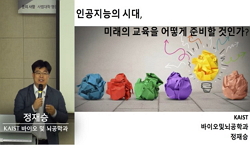학명은 근대 한국에서 선농불교를 주창하고 실천한 선구자이다. 용성 보다 시기적으로 빠르다는 점에서 ‘효시’로까지 볼 수 있다고 평가하였다. 이러한 관점은 선농불교를 단순히 禪家 ...
http://chineseinput.net/에서 pinyin(병음)방식으로 중국어를 변환할 수 있습니다.
변환된 중국어를 복사하여 사용하시면 됩니다.
- 中文 을 입력하시려면 zhongwen을 입력하시고 space를누르시면됩니다.
- 北京 을 입력하시려면 beijing을 입력하시고 space를 누르시면 됩니다.
https://www.riss.kr/link?id=A82613486
-
저자
김호성 (동국대학교)
- 발행기관
- 학술지명
- 권호사항
-
발행연도
2010
-
작성언어
Korean
-
주제어
학명 ; 용성 ; 강유문 ; 결사 ; 선농결사 ; 반농반선 ; 보청 ; 피은 ; 청규 ; 「내장선원 규칙」 ; 「선원곡」 ; Hak-Myung ; Yong-Sung ; Sŏn-Agriculture Buddhism ; Gyŏl-sa(Fraternitas) ; Gyŏl-sa of Sŏn-Agriculture ; <Rules of Naejang Sŏnwŏn> ; <Sŏnwŏngok>
-
KDC
220
-
등재정보
KCI등재
-
자료형태
학술저널
-
수록면
101-138(38쪽)
-
KCI 피인용횟수
10
- 제공처
-
0
상세조회 -
0
다운로드
부가정보
국문 초록 (Abstract)
학명은 근대 한국에서 선농불교를 주창하고 실천한 선구자이다. 용성 보다 시기적으로 빠르다는 점에서 ‘효시’로까지 볼 수 있다고 평가하였다. 이러한 관점은 선농불교를 단순히 禪家 전통의 普請과는 다른 차원에서 이해함으로써 가능하게 되었다. 물론 선농불교는 보청의 전통을 잇고 있지만, 보청과는 달리 뚜렷한 역사적 특수성을 반영한다. 그 시대 상황 속에서 교단의 존재양식에 대한 반성에서 출발하므로 개혁적 성격이 있다. 학명이나 용성의 선농불교가 선가 전통의 보청과는 다른 측면이다. 이 점을 주목할 때 ‘역사’는 형성된다. 또 한편으로 학명의 선농불교에서 주목할 점은, 학명 스스로가 ‘결사운동’이라고 自任하거나 표방한 일이 없음에도 불구하고 하나의 ‘결사’로 볼 수 있다는 점이다. 선농의 결사, 즉 선농결사로 자리매김할 수 있다고 나는 본다. 이 논문은 바로 그 점을 드러내고자 한 것이다. 우선 학명의 선농불교를 하나의 결사로 볼 수 있으려면, 결사의 개념 정의에 있어서 스스로 ‘결사’라고 하는 의식이 있었는가 하는 점은 결정적인 기준이 되지 않아야 한다. 그러한 표방 여부와는 별도로, 결사를 구성하는 데 더욱 중요한 것은 그것이 避隱 속의 개혁인가, 또 脫권력/脫정치의 수행운동인가 하는 점에 있었던 것으로 보았다. 이런 나의 결사 개념에 비추어 볼 때, 학명의 선농불교는 손색이 없는 결사였던 것으로 평가하였다. 또 하나 그의 선농불교 현장에서 활용되었던 텍스트 속에서, 학명의 선농불교가 결사임을 증거하는 성격의 텍스트를 확인할 수 있다는 점이다. 결사는 공동체 운동이므로 참가한 대중들의 윤리적 실천강령이 필요하다. 그것은 역시 禪家의 전통을 이어서 ‘淸規’라는 형태로 나타난다. 내장사에서 행해진 학명의 선농불교에는 「內藏禪院 規則」이 제정되어 있었으며, 여기에는 선농불교를 행해야 할 이유나 목표 등이 간략하지만 분명하게 표방되어 있었다. 結社文에서 밝혀야 할 성격의 내용까지 포괄하고 있었던 것이다. 하지만 결사의 논리적 이유와 방법을 밝히고 있는 結社文의 역할을 대신해 줄 텍스트가 없었던 것은 아니다. 바로 「禪園曲」이라는 불교가사이다. 거기에는 선농불교의 반대자를 설득하는 논리와 農이 禪 안에서 차지하는 의미 등을 밝히고 있어서, 시기적으로 늦게 발표된 것이므로 結社文이라 보기는 어려울지 몰라도 결사의 이유를 적은 理由書라 해도 좋을 것으로 평가하였다. 이러한 두 가지 접근방법을 통하여, 나는 학명의 선농불교는 그 자체가 결사적 성격을 갖는 것으로서, 보통명사적 의미에서 ‘선농결사’로 불러도 좋으리라 본다.
다국어 초록 (Multilingual Abstract)
Hak-Myung(鶴鳴) was a Sŏn master, a buddhist reformer, a performer of combinational practice of Sŏn and Agriculture, a poet, and a painter who drew the paintings of Bodhi-Dharma(達磨圖). Therefore overall studies should be done on his varied fa...
Hak-Myung(鶴鳴) was a Sŏn master, a buddhist reformer, a performer of combinational practice of Sŏn and Agriculture, a poet, and a painter who drew the paintings of Bodhi-Dharma(達磨圖). Therefore overall studies should be done on his varied facets, but before that, deep researches on his individual aspects should be preceded. Previous studies on Hak-Myung as a reformer, as a performer of Sŏn-Agriculture Buddhism, and as a poet have been done a little. Especially the studies on his thought and conduct of combinational practice of Sŏn and Agriculture have been received lots of attention along with his reformative position on the history of modern Buddhist order in Korea. Considering small quantities of primary and secondary sources which remain now, I was not sure if there could be a new understanding. However researching more concretely, I realized that there are still some parts which need to be organized. One of them is the point that the first of the Sŏn-Agriculture Buddhism which had conducted combinative practice of Sŏn and Agriculture in modern Korean Buddhism was not Yong-Sung(龍城) but Hak-Myung unlike existing theory. I have already re-examined in my previous study. In addition, through this study, it could be re-appraised that Hak-Myung's Sŏn-Agriculture Buddhism as a Gyŏl-sa(結社, Fraternitas). It is obvious to me who has been interested in the Gyŏl-sa(結社, Fraternitas) for a long time and evaluated it as a restoration of spirit of renunciation. First of all, there is one problem in my perspective that regards Hak-Myung's Sŏn-Agriculture Buddhism as a Gyŏl-sa. He has never said his Sŏn-Agriculture Buddhism as a 'Gyŏl-sa' in his own words. In regard of appraising a new Buddhist movement as a Gyŏl-sa, usually it is an important criterion that the advocate of the movement is aware of a previous Gyŏl-sa and willing to succeed it. However, I think it is not a decisive criterion that the advocate claims and regards his/her movement as the Gyŏl-sa. Because fulfilling those components which construct a 'Gyŏl-sa' is much more important. The first component is that if it is a reformation held on condition of seclusion. Hak-Myung's Sŏn-Agriculture Buddhism tried to practice within its power first--in a corner-- realizing properly the problems of Sŏn order and the entire Buddhist society. The second component is that if it is a movement of practice held for non-power/ non-political purpose, and it satisfies the condition. Hak-Myung practiced the Sŏn-Agriculture Buddhism under the banner of 'Half Farm and Half Sŏn-ism' at Naejangsa temple, but his purpose was not controlling the whole Buddhist order. Moreover, his position was only a chief monk of a branch temple. The third component is that even if Hak-Myung's Sŏn-Agriculture Buddhism was a small-scale moral community, it was definitely a Gyŏl-sa. In the light of the definition of the Gyŏl-sa, it is possible to regard Hak-Myung's Sŏn-Agriculture Buddhism as a Gyŏl-sa. Moreover if it is accepted, there should exist two elements : 'Pure Rules' which the participants follow and 'a statement of reason' which defines logical reasons or methods. On the 'Pure Rules', the previous researchers also --even if they didn't point out that it was not the 'Pure Rules of the Gyŏl-sa'-- have been agreed that <Rules of Naejang Sŏnwŏn> is the Pure Rules. There, the principle, the purpose, the method of the Gyŏl-sa and the concrete standards of daily life are enacted. In the sense that the <Rules of Naejang Sŏnwŏn> includes the principle and purpose of the Gyŏl-sa, it can be regarded that Hak-Myung's Sŏn-Agriculture Buddhism as a Gyŏl-sa of Sŏn-Agriculture. But it is no doubt that if there exist a proclamation, it could be regarded as a definite associational movement. Considering it is general that a proclamation is issued in the beginning of the Gyŏl-sa, it seems that there is no such a thing in hak-Myung's Sŏn-Agriculture Buddhism. But, even though the time of announcement was delayed a bit, there is a noteworthy buddhist poetry <Sŏnwŏngok> which gives the particulars of the reasons and the methods of Sŏn-Agriculture Buddhism. It is hard to be called exactly a proclamation, but I think it can be evaluated as the 'statement of reason of the Gyŏl-sa' because this text performs a role what a proclamation usually does. And it might be used as a textbook for the participants to understand the Gyŏl-sa. Thus, in respect of conceptual perspective and fulfillment of required texts, it is possible to say that Hak-Myung's Sŏn-Agriculture Buddhism is a kind of Gyŏl-sa. Hak-Myung's Sŏn-Agriculture Buddhism is also an Gyŏl-sa of Sŏn-Agriculture. It is noticeable that Hak-Myung's Sŏn-Agriculture Buddhism takes on a specific historicity which cannot be evaluated as a mere cooperation requesting of Sŏn society. As an attempt which tried to ultimately reform the malady of modern Korean Buddhism that had been turned away from labour and digressed from the spirit of renunciation, Hak-Myung's Sŏn-Agriculture Buddhism should be re-appraised its historical value. Now we are at a fork in the road : one that moves us away from Hak-Myung, and the other that goes together with him. Which road would the Korean Sŏn performer choose? The future of Korean Buddhism might depend on it.
목차 (Table of Contents)
- Ⅰ. 머리말
- Ⅱ. 결사의 개념에 비춰본 鶴鳴의 禪農佛敎
- Ⅲ. 鶴鳴의 저술에 보이는 結社的 성격
- 1. 「내장선원 규칙」, 결사의 淸規
- 2. 「禪園曲」, 結社의 理由書
- Ⅰ. 머리말
- Ⅱ. 결사의 개념에 비춰본 鶴鳴의 禪農佛敎
- Ⅲ. 鶴鳴의 저술에 보이는 結社的 성격
- 1. 「내장선원 규칙」, 결사의 淸規
- 2. 「禪園曲」, 結社의 理由書
- Ⅳ. 맺음말
- 국문요약문
- Abstract
- 참고문헌
참고문헌 (Reference)
1 金鍾眞, "학명의 가사 ‘선원곡’에 대하여" 동악어문학회 33 : 1998
2 김호성, "탄허의 결사운동에 대한 새로운 조명" 한암사상연구원 3 : 2009
3 김호성, "정혜결사의 윤리적 성격과 그 실천" 한국불교학회 16 : 1991
4 김호성, "비베카난다의 붓다관에 대한 비평 : 遊行(sannyāsa)과 出家(pabbajjā)를 중심으로" 인도철학회 (29) : 137-172, 2010
5 김호성, "불교화된 孝담론의 해체 ‘중국 - 유교’ 및 ‘인도 - 힌두교’와 관련하여 , 佛緣錄" 여래장 2010
6 김호성, "불교해석학 연구" 민족사 2009
7 김호성, "불교, 소설과 영화를 말하다" 정우서적 2008
8 김호성, "봉암사결사의 윤리적 성격과 그 정신 , 봉암사 결사와 현대한국불교" 조계종출판사 2008
9 金光植, "백학명의 선농불교 in: 학명집" 성보문화재연구원 2006
10 김호성, "바가바드기타와 관련해서 본 漢岩의 念佛參禪無二論" 월정사 한암사상연구원 1 : 2006
1 金鍾眞, "학명의 가사 ‘선원곡’에 대하여" 동악어문학회 33 : 1998
2 김호성, "탄허의 결사운동에 대한 새로운 조명" 한암사상연구원 3 : 2009
3 김호성, "정혜결사의 윤리적 성격과 그 실천" 한국불교학회 16 : 1991
4 김호성, "비베카난다의 붓다관에 대한 비평 : 遊行(sannyāsa)과 出家(pabbajjā)를 중심으로" 인도철학회 (29) : 137-172, 2010
5 김호성, "불교화된 孝담론의 해체 ‘중국 - 유교’ 및 ‘인도 - 힌두교’와 관련하여 , 佛緣錄" 여래장 2010
6 김호성, "불교해석학 연구" 민족사 2009
7 김호성, "불교, 소설과 영화를 말하다" 정우서적 2008
8 김호성, "봉암사결사의 윤리적 성격과 그 정신 , 봉암사 결사와 현대한국불교" 조계종출판사 2008
9 金光植, "백학명의 선농불교 in: 학명집" 성보문화재연구원 2006
10 김호성, "바가바드기타와 관련해서 본 漢岩의 念佛參禪無二論" 월정사 한암사상연구원 1 : 2006
11 김호성, "두 유형의 出家와 그 정치적 含意 : 힌두교와 불교에서의 權力과 脫權力의 문제" 인도철학회 (26) : 5-45, 2009
12 金光植, "근대불교혁신운동과 불교가사의 관련양상 in: 불교가사의 계보학" 소명출판 2009
13 김호성, "근대 한국의 禪農佛敎에 대한 재조명 - 鶴鳴과 龍城을 중심으로 -" 불교문화연구원 (55) : 383-410, 2010
14 김호성, "계초심학인문 새로 읽기" 정우서적 2006
15 김호성, "결사의 근대적 전개양상 - 정혜결사의 계승을 중심으로" 보조사상연구원 8 : 1995
16 然觀, "鶴鳴集" 성보문화재연구원 2006
17 安舟峰, "追慕白鶴鳴先師" (62) :
18 김호성, "結社의 정의에 대한 재검토" 보조사상연구원 31 : 189-229, 2009
19 김순석, "白鶴鳴의 禪農一致와 근대 불교개혁론" 한국선학회 (23) : 75-108, 2009
20 金素荷, "南遊求道禮讚(續)" (64) :
21 姜裕文, "內藏禪院一瞥" (46) :
22 柳錦海, "內藏寺故鶴鳴禪師靈骨及舍利通諜" (62) :
23 金光植, "‘학명의 선농불교에 보이는 결사적 성격’에 대한 논평" 한국선학회 2010
동일학술지(권/호) 다른 논문
-
- 한국선학회
- 강미자
- 2010
- KCI등재
-
- 한국선학회
- 이상옥(형운)
- 2010
- KCI등재
-
- 한국선학회
- 이대형
- 2010
- KCI등재
-
看話三要의 유기적 관계에 대한 고찰 -『高峰和尙禪要』를 중심으로
- 한국선학회
- 김숙현
- 2010
- KCI등재
분석정보
인용정보 인용지수 설명보기
학술지 이력
| 연월일 | 이력구분 | 이력상세 | 등재구분 |
|---|---|---|---|
| 2028 | 평가예정 | 재인증평가 신청대상 (재인증) | |
| 2022-01-01 | 평가 | 등재학술지 유지 (재인증) |  |
| 2019-01-01 | 평가 | 등재학술지 유지 (계속평가) |  |
| 2016-04-29 | 학술지명변경 | 한글명 : 韓國禪學(한국선학) -> 禪學(선학) |  |
| 2016-02-04 | 학회명변경 | 영문명 : Korean Seon Studies -> The Korean Society for Seon Studies |  |
| 2016-02-03 | 학술지명변경 | 외국어명 : Journal of Korean Seon Studies -> Journal of Seon Studies |  |
| 2016-01-01 | 평가 | 등재학술지 유지 (계속평가) |  |
| 2012-01-01 | 평가 | 등재 1차 FAIL (등재유지) |  |
| 2009-01-01 | 평가 | 등재학술지 선정 (등재후보2차) |  |
| 2008-01-01 | 평가 | 등재후보 1차 PASS (등재후보1차) |  |
| 2007-01-01 | 평가 | 등재후보학술지 유지 (등재후보1차) |  |
| 2005-01-01 | 평가 | 등재후보학술지 선정 (신규평가) |  |
학술지 인용정보
| 기준연도 | WOS-KCI 통합IF(2년) | KCIF(2년) | KCIF(3년) |
|---|---|---|---|
| 2016 | 0.68 | 0.68 | 0.6 |
| KCIF(4년) | KCIF(5년) | 중심성지수(3년) | 즉시성지수 |
| 0.59 | 0.56 | 1.142 | 0.19 |




 eArticle
eArticle




